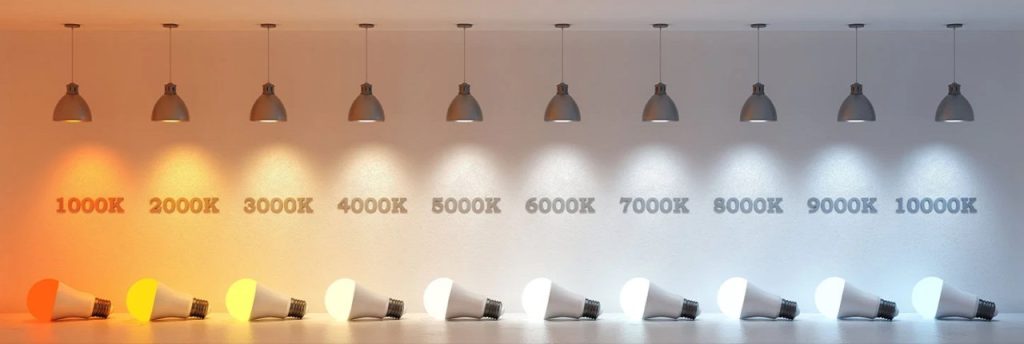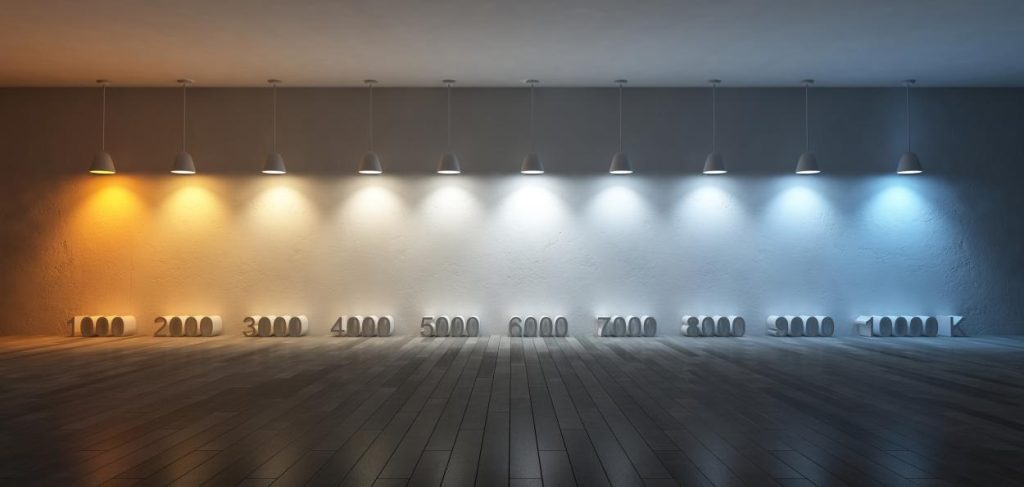Optimal Landscape Lighting Guide: 2700k vs 3000k
Shining Light in the Dark: An Introduction to Landscape Lighting
Landscape lighting, often referred to as garden lighting, comprises an array of outdoor illumination fixtures used primarily for aesthetic and security purposes. These sparkling gems are usually scattered across the property in strategic locations to illuminate walkways, accentuate architectural features, or highlight the natural beauty of gardens.
Primarily employed after sunset, landscape lighting invokes a sense of warmth and security while enhancing the nighttime aesthetic appeal and usability of outdoor spaces. This artful ballet of light and shadow can transform a mundane space into an ethereal sanctuary or a charming social hotspot.
It not only helps us navigate safely around our property but also extends our living space beyond the confines of our walls. Good landscape lighting design can add considerable value to your home by improving visual appeal – a crucial factor if you’re considering selling your property.
The Art that Shines: The Importance and Benefits of Landscape Lighting
Beyond its basic function as a lighting tool, landscape lighting serves multifaceted roles that significantly enhance the quality of outdoor living spaces. For starters, it amplifies the beauty of your surroundings by drawing attention to carefully chosen points within your yard or garden – be it a towering tree or a whimsical water feature.
The safety benefits are immeasurable: well-lit paths prevent accidental trips and falls while deterring potential intruders by eliminating dark corners where they might hide. Moreover, landscape lighting increases usability; with well-placed lights, patios, poolsides, and gardens can be enjoyed at all hours.
On a subtler level, these radiant installations create ambiance; they profoundly impact mood and atmosphere. Whether you seek romantic soft-edged shadows dancing on your pergola’s posts or bright floodlights highlighting your basketball court for some nocturnal shooting hoops sessions, each set up sets a different tone.
Setting the Tone: An Overview of Color Temperatures in Lighting
When we delve into the world of landscape lighting, the term ‘color temperature‘ frequently surfaces. Measured in units called Kelvin (K), color temperature does not refer to heat but rather the color characteristics of light. Understanding this concept is vital to creating a lighting scheme that complements and enhances your outdoor space.

Lower Kelvin values (2000K–3000K) produce a warm, cozy light with an orange or yellowish hue – akin to the glow from a setting sun or a flickering fireplace. Higher Kelvin values (5000K-6500K), conversely, emit a cooler white or bluish light reminiscent of daylight. These extremes aren’t conducive for landscape lighting, as they can make your outdoor space feel too harsh or too sleepy.
For most landscape applications, somewhere between 2700k and 3000k provides an elegant balance – warm enough to be inviting yet cool enough to provide clear visibility. The choice between these two temperatures depends on several factors, like personal taste, desired ambiance, and surrounding elements, which will all be discussed in detail as we proceed.
Understanding Color Temperatures: 2700K and 3000K
The Kelvin Scale Illuminated: A Fundamental Guide to Lighting
When discussing lighting, particularly in relation to color temperature, the Kelvin scale becomes fundamentally important. Named after the esteemed Lord Kelvin, the scale provides a quantifiable method of describing color temperatures. Essentially, it measures the ‘warmth’ or ‘coolness’ of light produced by a light source.
A lower value on this scale – say around 2700K – implies a warmer, redder light, while a higher value, such as 5000K, points towards cooler, bluer light. It’s noteworthy that this is quite paradoxical; lower temperatures are associated with warmth and higher ones with coolness.
The importance of understanding the Kelvin rating lies in its capacity to influence our perception of an environment. It can help set the mood or atmosphere, accentuate certain architectural features or landscapes, and even impact our well-being.
Delving into the Warm Glow: Characteristics of 2700K Light
There is an inherent warmth in the hue provided by a 2700K light bulb that holds universal appeal – it’s reminiscent of the soothing glow from a setting sun or firelight. This type of lighting evokes feelings of comfort and relaxation, making it perfectly suited for rooms where tranquility is desired.
Ideal environments for this warmth level are those meant to induce restfulness, such as living rooms, bedrooms, or dining areas where ambient lighting is crucial. When cast over landscapes at night, it gently highlights features without harsh contrasts, thus creating an intimate outdoor setting.
The impact on mood is substantial – the amber hue elicits sentiments associated with coziness due largely to its subtle softness, which minimizes glare. Architects and interior designers often use these lights for their ability to subtly paint scenes with inviting luminance that neither intrudes nor dominates but whispers of serene beauty.

Exploring the Cooler Nuances: Characteristics of 3000K Light
Stepping up slightly on the Kelvin scale, we encounter 3000K light. This yields a whiter hue – still warm but noticeably less yellow than its 2700K counterpart. The comparative coolness of this light temperature makes it ideal for spaces requiring clarity and precision.
This type of light works well in functional areas such as kitchens or offices where tasks are performed. It’s equally suitable for outdoor spaces requiring sufficient lighting for safety purposes, like driveways, garages, or security perimeters. It also brilliantly exposes architectural features with sharper contrasts compared to 2700K light.
The impact on mood and atmosphere is rather different – it invokes a sense of alertness and energy due to its brighter and sharper aesthetic. This is why you’ll often find these lights in areas where focus or active engagement is needed. The cooler hue helps maintain concentration – essential in workspaces – while enhancing visibility when used outdoors.
Comparing and Contrasting: Choosing Between 2700K or 3000K for Landscape Lighting
The Intricate Dance of Color Temperatures: Comparing and Contrasting
The decision between 2700K and 3000K for landscape lighting is driven by a variety of factors, including the desired ambiance, the type of environment, and the impact on surrounding flora. The color temperature chosen can greatly influence the final aesthetic and functional outcome.
The warmer white light (2700k) offers a cozy, welcoming glow that mimics the natural warmth of a sunset or firelight. It’s ideal for creating intimate, comfortable spaces in your outdoor areas. However, it may not be as effective in highlighting certain architectural features or plants due to its softer lighting.
On the other hand, the cooler white light (3000k) provides a brighter, more energetic feel akin to daylight conditions. This type of lighting is well-suited to showcasing intricate details of your landscape design or enhancing security by increasing visibility. Its clear lighting could potentially overshadow subtle features, though.
Comparison in Different Environments: Gardens, Patios, and Driveways
Setting the Stage: Evaluating Lighting Effects in Varied Scenarios
Specific environments within your landscape may dictate whether you lean towards warmer (2700k) or cooler (3000k) lighting fixtures. For instance, gardens with lush greenery can benefit from warmer lights that emphasize leaf textures while maintaining an enchanting ambiance during twilight hours.
Conversely, patios utilized for social gatherings might benefit from cooler lights that enhance clarity for activities after sunset yet still provide a relaxing atmosphere. Similarly, driveways would require brighter lighting provided by 3000k lights to ensure safe navigation during dark hours.

Impact on Plant Life
The Subtle Interplay of Light and Life: Effects of Landscape Lighting on Plants
The impact of landscape lighting on plant life is an essential consideration. While research suggests that most plants are not significantly affected by the color temperature of artificial light, subtle effects may be observed. Warmer lights can highlight the rich greens and deep shadows in a way that emphasizes their natural aesthetics.
Cooler lights, however, could create strong contrast and reveal minute details like vein patterns or dewdrops on leaves. In terms of growth, no substantial evidence suggests either light type causing harm to plants when used responsibly.
Case Studies: Real-World Applications of Both Types of Lights
Lighting the Way: Unveiling the Practical Utilizations of Different Color Temperatures
Real-world applications provide valuable insights into creative uses of 2700k and 3000k landscape lighting. For instance, outdoor art installations often favor warmer hues (2700k) to emulate natural sunset, which can romantically highlight sculptures and structures.
Alternatively, retail complexes might utilize cooler white lights (3000k) in their landscapes for brighter lighting aiding navigation while enhancing architectural aspects. The ultimate choice hinges upon the desired effect and particular requirements of each unique setting.
Tips for Implementing Landscape Lights with Either Temperature
Shedding Light on Success: Guiding Principles for Landscape Lighting Implementation
Choosing the right fixtures for each temperature is crucial, as they influence light distribution. Fixtures with diffusers or shades are ideal for warm white (2700k) lights to ensure even spread without overpowering brightness. For cooler white (3000k) lights, clear fixtures provide sharper focus, making them suitable for task-oriented areas like driveways or pathways.
Positioning your lights to maximize effectiveness involves assessing your landscape’s key features you wish to highlight or shadow effects you desire to create. Combining both temperatures can bring about dynamic effects and depth to your landscape, introducing a dimension of interest while catering to diverse functional needs.
Conclusion: Landscape Lighting with 2700k or 3000k?
As we peer into the future of landscape lighting, it’s clear that the debate between 2700k and 3000k will continue to evolve as technology advances and design trends shift. What will remain constant is the profound impact our lighting choices make on the aesthetic appeal and functionality of our outdoor spaces. Whether you opt for warmer hues or lean towards cooler tones, remember that successful landscape lighting is about creating an enchanting interplay of light and shadow that reflects personal preferences while respecting natural environments.
You may also be interested in the following posts:
